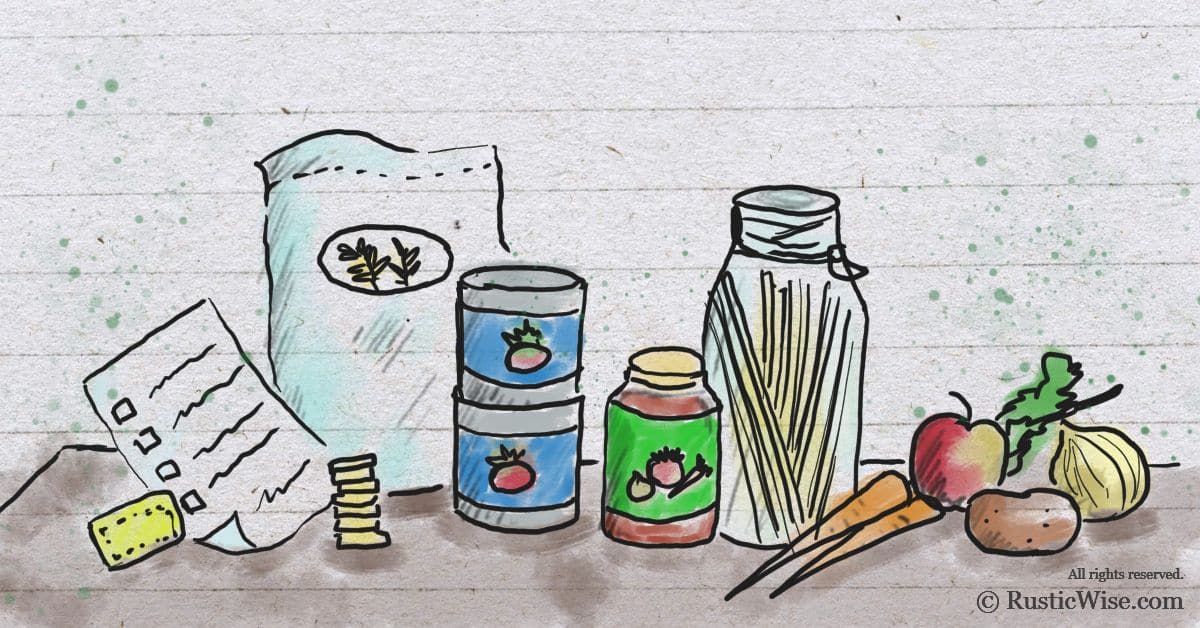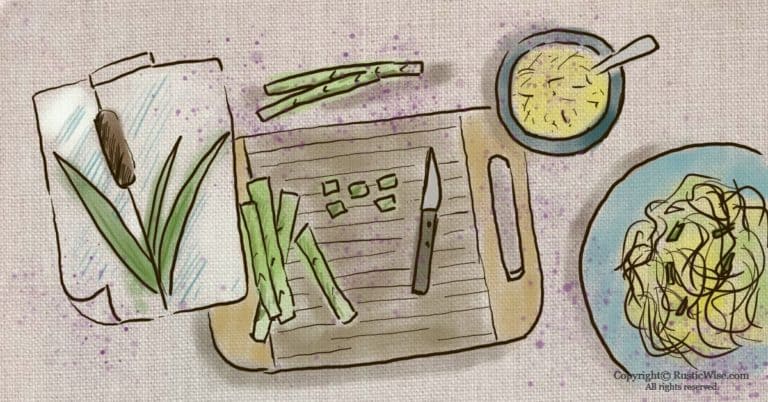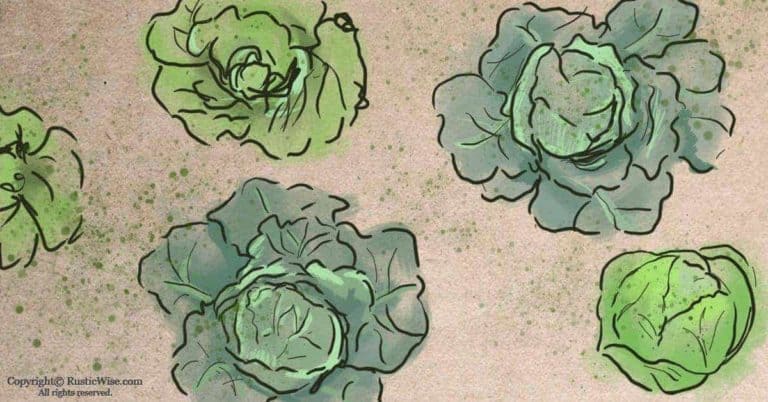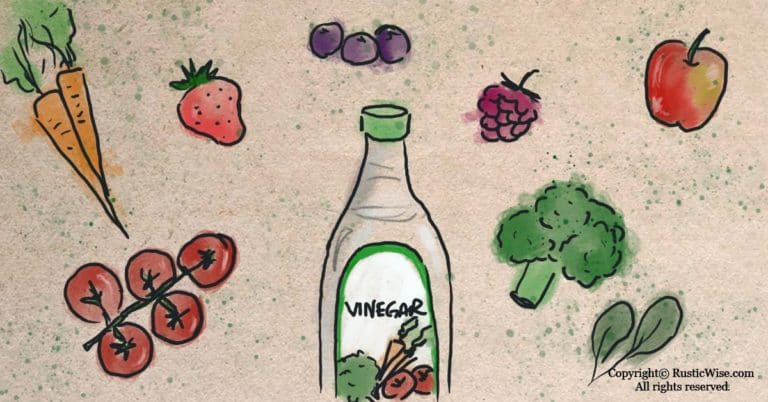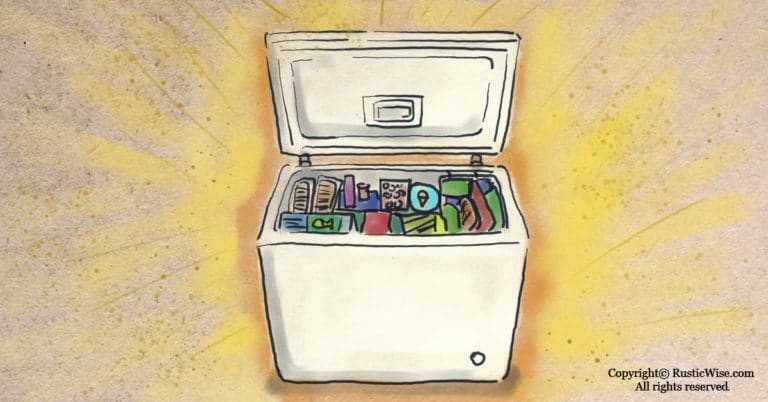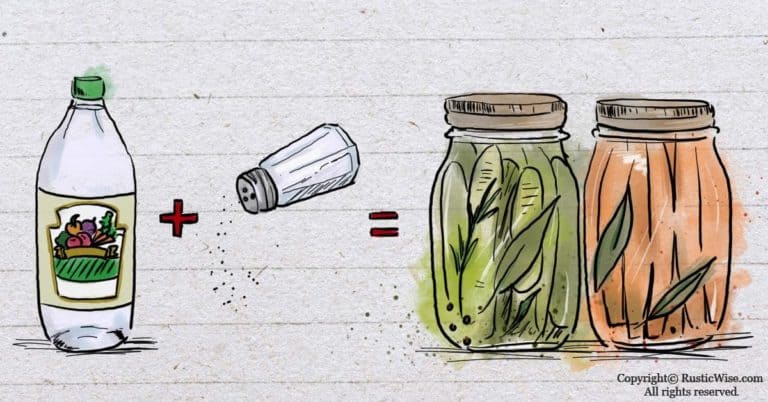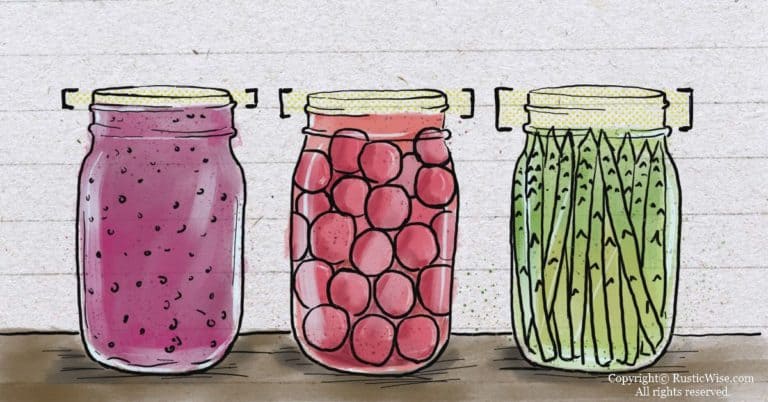How to Stock a Pantry on a Budget
Whether you’re strapped for cash, or on a strict budget, you can still stock up your pantry with affordable food staples that help you throw together a quick meal on-the-fly.
Sometimes the tastiest, most creative meals are born of necessity. Knowing how to stock a pantry on a budget provides stability and a sense of comfort knowing you don’t need to sacrifice taste or health for the sake of saving a few dollars.
We’ll go over a few shopping tips to help you get the best deal in grocery stores, plus a list of cheap pantry staples as a starting point. We’ll also go into fridge and freezer essentials.
Shopping Tips
When you’re on a budget, you need to shop smarter. Here are a few shopping tips to help you get the best bang for your buck.
Stock up when items are on sale
The word “stockpile” sometimes has negative connotations when it comes to food, conjuring up images of Scrooge. But stocking up on food with a long shelf life that happens to be on sale just makes good sense. There’s nothing wrong with stockpiling food that you’re eventually going to use—it’ll also save you a few trips to the grocery store.
Some items that are good to stock up on are rice, flour, canned goods, condiments, and frozen foods. When buying any food item, I always like to look at the expiry date and pick the items that give you the longest shelf life. (Yes, I am on of those people.)
Shop on the right days
Avoid shopping on weekends if at all possible. Not only is it busy, grocery stores often run out of sale items on these days. Try to sneak out for a weekday shopping run between Monday to Thursday sometime before evening.
If you want to know the ultimate golden day to go shopping, it’s Wednesday. Store sales are in full swing and shelves are well-stocked. You’ll also be able to shop in relative peace and quiet.
Some stores offer discounts on certain days. In my neck of the woods, the first Tuesday of the month offers discounts between 10 and 15 percent. Look into what deals your local grocery stores offer.
Buy and eat seasonal items
Summer fruits like watermelon, cantaloupe, and pineapple are fairly affordable during the hot summer months. As soon as fall and winter hits, you’ll be paying much more for the same fruits. It’s best to eat seasonal fruits and vegetables to save money. If you’ve really got a craving for a certain fruit or vegetable, check to see if it’s available in the frozen food aisle.
Coupons and flyers are your friend
Growing up with a thrifty grandmother, I appreciate the value of coupons. Even if it’s a coupon that’s only for $0.50 off, these coupons add up—it’s like free money!
Most grocery stores have coupons pinned up at the entrance. Don’t forget to take a peek as you walk by.
Watching the flyers (either paper-version, or online) helps you see the items on sale before you go shopping so you can plan accordingly.
Buying in bulk
Certain items are just better deals when purchased in bulk. When referring to buying in bulk, I’m speaking of both the bulk food aisle and stores that offer bulk packaged foods such as Costco.
When buying in bulk, buy foods that you can eat up in a reasonable time. Food items such as nuts and seeds don’t last forever. Try placing these foods in the freezer to prolong their shelf life.
Items worth buying in bulk include rice, condiments, dried pasta, quinoa, oats, peanut butter, and frozen fruits and vegetables.
One awesome thing about the bulk food aisle is that they usually have something new and interesting you’ve never tried before.
Plan, plan, plan
Keep a grocery list in a handy place so you can jot down your grocery needs as soon as you run out of something. Try to plan meals a week ahead so you’re not scrambling to buy things at the last minute (that may or may not be a good deal).
Pantry items that are the best bang for your buck
These cheap pantry staples are something that I try to keep on hand at all times to throw together a quick meal. You never know who might pop by unexpectedly for dinner. Use this as a starting point, and customize according to your personal preferences.
Rice
Cheap, versatile, and filling, rice (white or brown) is a cheap pantry essential. The meal possibilities are endless, and when properly stored, lasts a long time.
Lentils
Packed with protein and fiber, lentils are a great base for healthy, meatless meals. Red lentil curry has become one of my favorite meals lately. Lentils are also great in soups and stews.
Beans
While dried beans are better bang for your buck, canned beans have their value too. If you’re on a strict budget, beans are a great source of protein (cheaper than meat), and are filling too. I like to keep both dried and canned beans in my pantry.
Dried pasta
One of the first meals most people learn to make is spaghetti and meat sauce—simple, quick, and affordable. Stock up on pasta when it’s on sale, or buy bulk.
Vinegar
White vinegar has so many uses in recipes and around the house. Add a splash of vinegar to your homemade vinaigrette dressing, or use as a tenderizer for meat and veggie dishes. Use white vinegar with baking soda as a natural cleaning solution around the house (just don’t use on sensitive surfaces like granite).
Condiment trio of ketchup, mustard, and mayo
This group of condiments is the keystone of a basic well-stocked pantry. We use a lot of ketchup at our house which is why we buy this in bulk. And mustard goes along with ketchup…
Mayo is essential for sandwiches and egg/potato salads.
Herbs and spices
Everyone has their own favorite herbs and spices, but salt and pepper make just about any meal taste better. Dried spices like chili powder, curry powder, garlic powder, bay leaves, and cinnamon are also great to have on hand.
Baking essentials
If you don’t fancy yourself a baker, there are plenty of easy recipes around to get you started. Buying a store-bought loaf of bread sets you back roughly $2 for a basic loaf—you can spend double that for an artisan loaf.
Baking your own bread might cost around $1.50 or less (plus your time of course). While baking is not the quicker or easier option, it allows you to control the ingredients used and nothing beats a homemade slice of bread fresh from the oven, with a pat of butter of course.
- Flour (all-purpose, whole wheat)
- Baking powder
- Baking soda
- Sugar (white, brown)
- Cornstarch
- Yeast
- Cocoa powder
Canned tomatoes
The ultimate meal-starter, canned tomatoes are a mainstay at our house. Use a can to make pasta sauce, add to chili, curry—the possibilities are endless.
Canned tuna
Tuna salad sandwiches are a cinch to put together for lunches. You can also throw tuna in a casserole as a source of healthy protein.
Soy sauce
Nothing beats soy sauce when you need a salty, savory, umami punch. If you’re not picky about soy sauce brands, this is one item that’s more affordable to buy in bulk.
Bouillon cubes
Shelf-stable and packed with flavor, bouillon cubes are great for enhancing sauces, soups, and stews.
Potatoes
I’ve never met a potato I didn’t like. Mashed, baked, or fried, potatoes are filling and versatile. When stored in a dry, cool place, they last a long time.
Onions
Not only are onions great for stretching out meals, they are also full of anti-inflammatory and antioxidant properties.
How to stock a pantry on a budget: fridge essentials
When I run out of one of the following items in my fridge, I start to panic.
Butter
While butter isn’t exactly cheap, it’s a key ingredient in just about everything.
Milk
A necessity for breakfast, and cooking creamy recipes.
Eggs
A breakfast and baking staple, eggs are a quick, easy source of protein.
Apples
Apples are great fresh, baked, and made into apple sauce. With their long shelf life and many uses, you can afford to stock up on this fruit.
Carrots
Carrots are great raw, added to shakes, or added to soups and stews. Lately, I’ve been making oven-baked carrot fries.
How to stock a pantry on a budget: freezer essentials
Make room in your freezer for these essential frozen foods.
Frozen vegetables
The flavor and texture of frozen veggies are preferable to canned veggies in my opinion. I like to have frozen peas and corn on hand.
Frozen fruit
Since you can’t always buy fresh fruit, frozen fruits are the way to go. Add them to your morning smoothies, or use for desserts.
Frozen ground meat
Yes, meat is expensive, but frozen ground meat is the more affordable option. You can buy a large portion at Costco, then divide and freeze into meal-sized servings.

Author: Theresa Tesolin
Theresa is co-founder of RusticWise. She helps people unleash their inner DIY spirit by encouraging them to get dirty and make or grow something from scratch.

